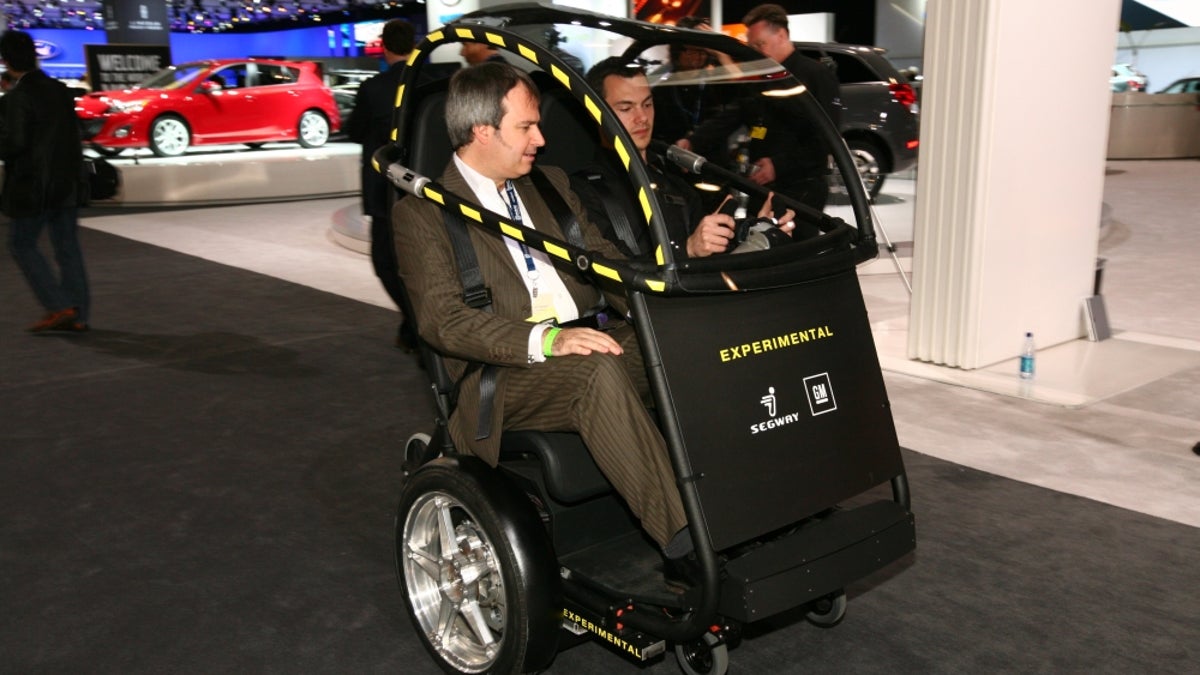Segway gives us a lift in the PUMA
Segway and GM showed off a personal mobility vehicle, the result of a collaboration, at the 2009 New York auto show.

Buzzing around the floor of the 2009 New York auto show, is the PUMA--the result of a collaboration between Segway and GM. We had a chance to ride in the vehicle, an electric-powered two seater. PUMA stands for Personal Urban Mobility and Accessibility, and works on similar principles as the Segway Personal Transporter. Where on the Personal Transporter, you lean forward to make it go, the PUMA's steering column has to be pushed, which causes the entire cab to slide to the front and move weight forward, making the PUMA go.
The driver of the PUMA cautioned us to keep our legs loose--as the cabin shifted--and then we were off. The vehicle picked up a good amount of speed until the driver pulled back on the wheel, shifting our weight again and slowing it down. It was hard to believe we were traveling on two wheels, as it felt very balanced. (There are auxiliary wheels, with two on the rear for safety and two in front to support the PUMA when it is stopped.)
Turning was very smooth: as the driver turned the little wheel, power diverted to the outside wheel, letting the PUMA turn almost on a dime. Coming to a stop felt like the end of a roller coaster ride, as the PUMA leaned forward sharply and the cabin shifted again. A Segway representative came over and lifted up a safety bar.
The PUMA is supposed to go up to 35 mph, with a range of 35 miles. A Segway representative told us that, after a full day of demonstration rides, the battery was only half-drained. The PUMA weighs 400 pounds, but is a very early model, with a second generation due to come out in the fall. GM initially approached Segway about the collaboration 18 months ago, but the PUMA on display was developed and built at the Segway plant in only 90 days.
GM isn't the first car company to develop a personal mobility vehicle. Japanese car companies have been at it for a long time. During the 2007 Tokyo auto show, we saw examples from both Toyota and Suzuki.

